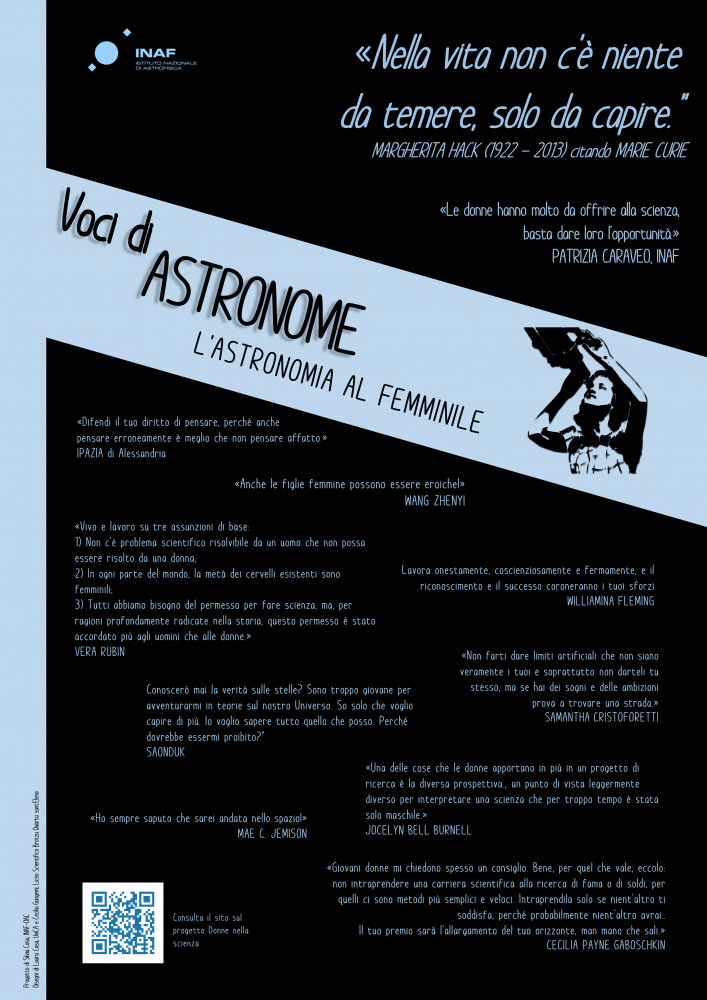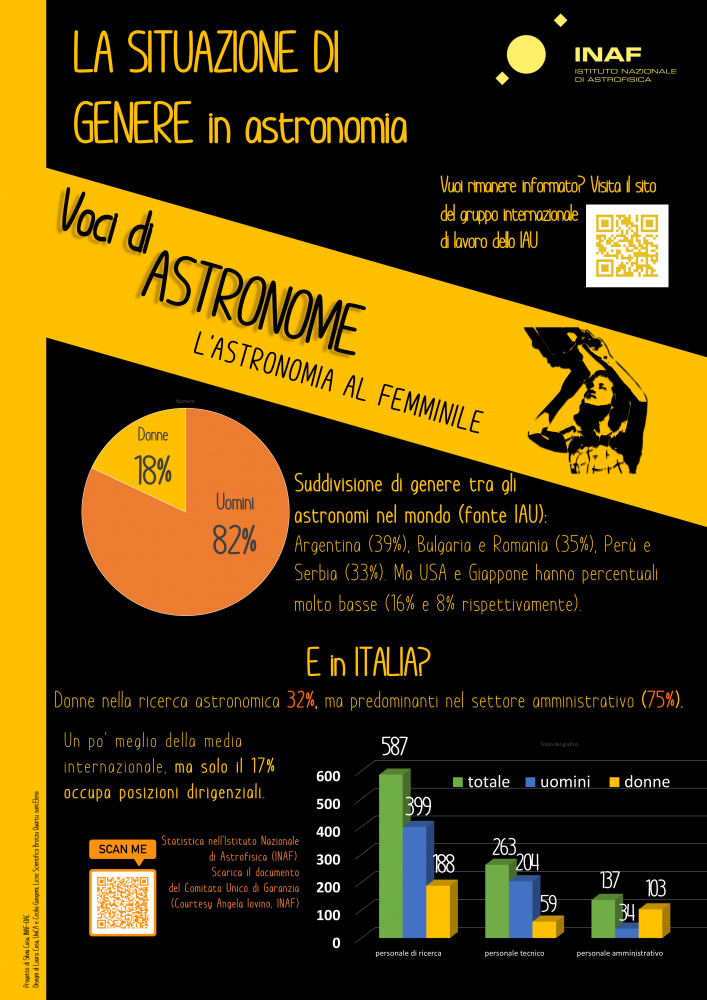Voices of Astronomers – the Pioneers
EN HEDU’ ANNA, circa 2300 BC
Sumerian priestess of the Moon goddess, En Hedu’ Anna lived around 2300 BC. Her name is one of the earliest recorded in history. En Hedu’, whose name meant “ornament of the sky,” held a position of great prestige and power. She belonged to the class of Sumerian priests who helped create calendars based on the movements of the stars and lunar cycles.
In one of her poems, passed down to us, her work is described:
“True woman who possesses wisdom in excess,
consults the lapis lazuli table
dispenses advice to all regions…
Measures the heavens
Sets the measuring cords on the earth.”
AGANICE (or AGLAONICE) of Thessaly, circa 300 BC
Thessalian princess who probably lived in the 2nd century BC, she is considered the first astronomer in history. “She knew the cause of total lunar eclipses and predicted in advance the moment when the star would enter the Earth’s shadow,” writes Plutarch in Conjugal Precepts, and “she deceived other women by convincing them she could bring down the Moon.” Therefore, Plato considered her a witch. Some astronomers and followers of Aglaonice, apparently regarded as witches or sorceresses, associated with her and began to be known as “The Witches of Thessaly,” a very famous and active group during the 3rd century BC.
A crater on Venus bears her name.
HYPATIA of Alexandria, 350/370 – 415 AD.
Greek mathematician, philosopher, and astronomer, a proponent of the Neoplatonic school. Daughter of Theon, known in Alexandria for his mathematical and astronomical knowledge, according to the philosopher Damascius, “she was of a nobler nature than her father, not content with the knowledge derived from the mathematical sciences to which he had introduced her, but with a lofty spirit, she also dedicated herself to other philosophical sciences.”
A woman of immense culture, none of her writings have survived, probably due to one of the many fires that destroyed the Library of Alexandria. Despite the absence of her writings, other philosophers of the time speak of her as one of the most advanced minds of her era.
Famous for her mathematical and astronomical studies, she invented the astrolabe, the planisphere, and the hydroscope. She even formulated hypotheses about the movement of the Earth, and it is very likely that she tried to surpass the Ptolemaic theory that placed the Earth at the center of the universe.
Her brutal murder by an enraged mob of Christians made her one of the first “martyrs of freedom of thought.”
The International Center for Women and Science, created in 2004 by UNESCO in Turin to support the study, research, and training of women scientists in the Mediterranean, is dedicated to her name.
SEONDEOK of Silla, circa 610 – 647 AD
Korean reigning queen, the twenty-seventh ruler of Silla and the first woman to wear the crown. She was an enlightened queen who encouraged the revival of thought, literature, and art in Silla.
She was interested in astronomy and had the first astronomical observatory in the Far East (The Tower of the Moon and Stars) built, which was used to observe the sky and for weather forecasting.
The tower still stands in the ancient capital of Silla, Gyeongju, in South Korea.
HILDEGARD of Bingen, 1098 – 1179 AD
Benedictine abbess of aristocratic origins, she was a poet, writer, painter, naturalist, philosopher, healer. She authored many writings, and one of the earliest artificial languages known, probably used for mystical purposes. She also wrote a treatise on cosmology, of “divine inspiration,” in which 300 years before Copernicus, following the line of Aristarchus of Samos and Hypatia, she supported a heliocentric theory.

